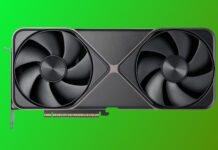When nVidia released its GeForce 6800 there was a lot of talk about Shader Model 3.0. Lots of talk, but no action, so to speak. However this time we do have new information and three different tests that use Shader Model 3.0. This will be a first glance of how Shader Model 3.0 can affect our view of the GeForce 6 series…
When nVidia released its GeForce 6800 there was a lot of talk about Shader Model 3.0. Lots of talk, but no action, so to speak. However this time we do have new information and three different tests that use Shader Model 3.0. This will be a first glance of how Shader Model 3.0 can affect our view of the GeForce 6 series.
The big star on the testbench is Far Cry 1.2. But not only that, we also have Shadermark 2.1 RCS where we test synthetic Pixel Shader 3.0 performance and D3D RightMark where we test synthetic Vertex Shader 3.0 performance.
We like this arrangement as we can see Pixel and Vertex Shader 3.0 separately and at the same time show you the results of both in an actual game. Thus you will hopefully be little wiser by reading our article instead of those already released. 
For the sake of simplicity we chose to do the test with only one card and one resolution, as the purpose of this article is to determine the differences in Shader Model 3.0 compared to 2.0. We begin with Far Cry 1.2. For the tests we use a GeForce 6800 Ultra (Extreme) on a nForce 2 400 Ultra with Athlon XP 3200+ and 1024 MB PC3200. We used the nVidia drivers 62.00 and the RC0 version of DirectX 9.0c.
Update: Thanks to TERdon who pointed out that our average percentage results was misleading. This is now corrected. The average FPS results are still a bit misleading so at this point you should take them with a pinch of salt.
We’ll kick off with the Far Cry 1.2 patch, which comes with a range of improvements. To test the performance we’ve chosen to run a few benchmark scripts supplied by nVidia for this article. The scripts do not contain anything strange but nVidia has of course picked some levels where the difference with Shader Model 3.0 is extra big. We will also test our own level (Fort) in the end to show you how it looks in the regular demo we use in our reviews.
| Level: |
SM 2.0:
|
SM 3.0:
|
Performance difference
|
| Volcano: |
82.9
|
86.9
|
+4.8 %
|
| Training: |
58
|
58
|
0 %
|
| Regulator: |
55.3
|
58.1
|
+5.1 %
|
| Research: |
86.3
|
96.7
|
+12.1 %
|
| Fort: |
56.5
|
57.1 |
+1.1 %
|
| Average: |
67.8
|
71.4
|
+4.6 %
|
Training and Fort are fairly limited by the processor and consequently there are no big differences. Regulator and Volcano are more representative of what you actually see in the game and Research shows an even bigger increase. At most we got about 15% when we were playing around with FRAPS. In my opinion these are impressive figures as it in most cases only differ about 5-10% between a GeForce 6800 Ultra and a Radeon X800 XT PE. Shader Model 3.0 does clearly have potential to win the performance competition for nVidia in future benchmarks even if the margin isn’t exactly big.
Let’s continue with the synthetic results.
In Shadermark 2.1 we test Pixel Shader 3.0 performance and the outcome is very mixed. In some tests we gain a lot of performance, but in the majority of the tests we don’t gain anything.
| Test: |
SM 2.0
|
SM 3.0
|
Difference:
|
| Diffuse Lighting |
579
|
579
|
0 %
|
| Directional Light Shader |
482
|
482
|
0 %
|
| Point Light Shader |
423
|
491
|
+16.1 %
|
| Spot Light Shader |
333
|
333
|
0 %
|
| Anisotropic Lighting |
453
|
453
|
0 %
|
| Fresnel Reflections |
425
|
425
|
0 %
|
| BRDF-Phong/Anisotropic Lighting |
298
|
298
|
0 %
|
| Car Surface Shader |
283
|
302
|
+6.7 %
|
| Environment Mapping |
650
|
652
|
+0 %
|
| Environment Bump Mapping |
520
|
552
|
+6.2 %
|
| Bump Mapping |
466
|
467
|
+0 %
|
| Shadowed Bump Mapping |
298
|
298
|
0 %
|
| Veined Marble Shader |
254
|
254
|
0 %
|
| Wood Shader |
367
|
368
|
+0 %
|
| Tile Shader |
241
|
254
|
+5.4 %
|
| Fur Shader with Anisotropic Lighting |
40
|
40
|
0 %
|
| Refraction and Reflection Shader with Phong Lighting |
180
|
230
|
+27.8 %
|
| Combination Effect: |
83
|
83
|
0 %
|
| Dual Depth Shadow Mapping with 3×3 Bilinear Percentage Closer Filter |
12
|
52
|
+333 %
|
| High Dynamic Range Shader (cross blur) |
78
|
116
|
+48.7 %
|
| High Dynamic Range Shader (gaussian blur) |
98
|
141
|
+43.9 %
|
| Edge Detection And Hatching Shader |
60
|
61
|
+0 %
|
| Water Colour Shader |
45
|
45
|
0 %
|
| Average |
290
|
303
|
+21.2 %
|
In average we get an increase in performance of 21.2 % in Shadermark 2.1 with Shader Model 3.0. Not too bad considering no shaders in the software are written directly for Pixel Shader 3.0. What makes the difference is simply that a Shader Model 3.0 Compiler Target has been used in HLSL. This may sound as mumbo jumbo to most of you. Briefly you can say that the test isn’t programmed with Shader Model 3.0 in mind, but the support for it has been added afterwards when all the shaders already had been written. From that point of view it is actually a fairly impressive result, as the support for Shader Model 3.0 didn’t require any work at all for the producer.
The last test is Vertex Shader 3.0.
Last but not the least: D3D Rightmark.
| Test: |
SM 2.0:
|
SM 3.0:
|
Performance difference
|
| Geometry Processing: |
30.4
|
36.7
|
+20.7 %
|
| Hidden Surface Removal: |
75.1
|
77.6
|
+3 %
|
| Average: |
52.8
|
57.2
|
+11.5 %
|
In D3D Rightmark we get some impressive results, both the geometry processing result alone and the average. Actually, the HSR result isn’t that interesting as it’s mostly limited by other factors than the Vertex Shading.
Now it’s time for the conclusion.
With an average increase of 12.4% and a few tests with some real spikes we are impressed by Shader Model 3.0. This is no doubt a benefit for nVidia and the more advanced the games will become the bigger the gain with Shader Model 3.0 will be.
However you should keep in mind that what we are talking about are performance differences only. There are things that are harder to do, if even possible at all, with Shader Model 2.0. In other words there is a number of things to obtain on the image quality as well.
Considering how small the margins are between ATi’s and nVidia’s current cards, Shader Model 3.0 gives nVidia a small nudge. With the full version of DirectX 9.0c and fully developed GeForce 6 drivers for DirectX 9.0c it’s an obvious advantage. An advantage far from enormous, but on the other hand not as insignificant as many earlier thought.

















